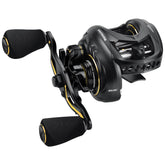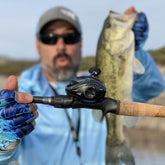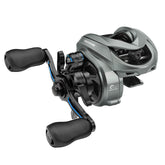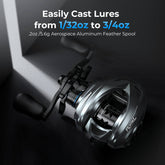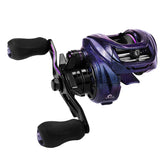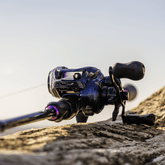
How to Rig a Drop Shot for Bass
Do you know how many different ways there are to catch largemouth and smallmouth bass? They are endless, from using lures – crankbaits, spinnerbaits, topwater, worms of all types, jigs and a ton of live bait options in the way of crawfish, shiners, minnows, earth worms, nightcrawlers and insects. And if you want, you can even target them using a fly rod. There is one method however that will catch bass when they are on the finicky side – drop-shot fishing! Drop shot fishing is very simple, but I'll bet there are tons of anglers out there that either don't believe in it, or don't know how to do it. Either way, it is time to start believing, or learn it because I will guarantee that when bass – largemouths and smallies – get finicky, a drop shot rig will get them biting.
How to Tie a Drop Shot?
Before you can even entertain a drop-shot rig you need to know what it is, and how to tie it. A drop shot rig is fairly simple to tie and can use a wide array of baits on the hook and weights. As a rule of thumb, when I drop shot fish, I always use 10-15 pound KastKing Hammer FFS with a long Kovert fluorocarbon leader of at least 10 feet. Drop shot rigs will weigh probably less than 1 ounce when all is said and done and you add up the weight, hook and whatever soft plastic you desire. Although you are not making long casts, the lighter line enables you to work the bait and make it dance, which in turn will entice bass. To tie a drop shot rig you can use two different methods. The first would be utilizing the VMC Spinshot Drop Shot hook. This hook basically has a swivel in the eye, giving you two tie points for your main line, and the weighted end line. It makes for easy and quick assembly, and it also aids in line twisting minimally. The second is to use a simple Octopus style hook in size 1 or 1/0. Leaving a large tag end, tie the hook to your main line using a Palomar knot. After completing the knot, insert the long tag end through the eye with the hook facing upwards. The tag end will be your weighted line. The last item is the length of the tag end, leave about 12–18 inches. That's enough line for the weight and lets your bait move naturally to attract bass. You can tweak a bit depending on depth, but don’t make it too short.
To tie a drop shot rig you can use two different methods. The first would be utilizing the VMC Spinshot Drop Shot hook. This hook basically has a swivel in the eye, giving you two tie points for your main line, and the weighted end line. It makes for easy and quick assembly, and it also aids in line twisting minimally. The second is to use a simple Octopus style hook in size 1 or 1/0. Leaving a large tag end, tie the hook to your main line using a Palomar knot. After completing the knot, insert the long tag end through the eye with the hook facing upwards. The tag end will be your weighted line. The last item is the length of the tag end, leave about 12–18 inches. That's enough line for the weight and lets your bait move naturally to attract bass. You can tweak a bit depending on depth, but don’t make it too short.
How to Fish a Drop Shot Rig?
To fish a drop shot rig, most times it will be a lot easier from a boat, with the aid of your electronics. However, I have used a drop shot rig from the bank and had good success with it, especially in the early fall or end of winter/early spring. Fishing from a boat allows you to pinpoint bait schools, then drop your drop shot rig into the mix. Chances are, if there is bait, there are bass. Another way to drop shot fish from a boat is similar to how you would fish from shore. Make a decent cast and allow the rig to settle on the bottom. Slowly begin your retrieve, with a few twitches of the rod tip in there every so often.
One of the key factors with drop shot fishing will be the weight. Depending on the drift of the boat, water depth and current, you may need to increase your weight. From the boat, for the most part, I want my drop shot rig to be heading in a vertical direction straight down from the boat. If the drift is fast due to wind, or you are fishing a river system or lake with dams and current, using the correct weight will be needed to keep it vertical. Obviously if you are casting outward from the boat, or from the shore, the weight will be a factor, but you will be able to adjust your retrieve. In this instance, the drop shot rig will not be fishing vertically. You can get the same result as a vertical presentation by holding your rod tip high, then impart upward twitches on occasion to dart the bait upwards from the bottom. This feisty bass jumped all over a Reins Bubbring in 20-feet of crystal clear water.
This feisty bass jumped all over a Reins Bubbring in 20-feet of crystal clear water.
Drop Shot Baits
The author will almost always use thinner and smaller profile drop shot baits, but using larger and bulkier baits should not be overlooked. My top favorite is the KVD Perfect Plastic Dream Shot or the Reins Bubbring Shaker. However, there are tons of soft plastics you can use on a drop shot rig. I like smaller and slimmer profile baits in the 2 to 4 inch class, but I have friends and other anglers I know that use larger worms up to 8 inches, creature baits and even Senko style worms. Bottom line is it depends on what baitfish the fish are feeding on. If you know that, then match the hatch. If you do not know, try a variety of different styles and sizes until you get bit. Colors will vary as well. As a rule of thumb I try and stick with natural colors, but at times will go to brighter colors.
My top favorite is the KVD Perfect Plastic Dream Shot or the Reins Bubbring Shaker. However, there are tons of soft plastics you can use on a drop shot rig. I like smaller and slimmer profile baits in the 2 to 4 inch class, but I have friends and other anglers I know that use larger worms up to 8 inches, creature baits and even Senko style worms. Bottom line is it depends on what baitfish the fish are feeding on. If you know that, then match the hatch. If you do not know, try a variety of different styles and sizes until you get bit. Colors will vary as well. As a rule of thumb I try and stick with natural colors, but at times will go to brighter colors.
Drop Shot Rod, Reel and Line
A smooth drag spinning reel in size 3000, matched to a 7'2" fast taper rod is the best rod and reel combo for drop shot fishing.

For the rod and reel, and seeing that I prefer lighter lines, spinning gear is the way to go. The KastKing Royale Legend Pro 7'2" Drop Shot rod is a good starting point. These rods have a nice taper allowing you to detect the lightest bite, and have enough strength to set the hook quickly. On the reel end, I have been using a KastKing Royale Legend Pro Spinning reel for years and love it. Any size 3000 spinning reel with a good drag (something all KK reels offer) will be fine. The line is pretty straightforward. I will primarily use 10-pound test Hammer FFS braid. I might on rare occasions move up to 12 or 15, but most times drop shot fishing is in clear, structure free waters, so most any bass can be landed with a good drag and patience. The key with the braid is the leader. For the leader, which will always be Kovert with line weights from 6 to 10-pound test.
FAQ
What is a drop shot rig and why use it for bass fishing?
A drop shot rig consists of a hook tied above a weight at the end of your line, allowing the bait to hover or move naturally. It’s ideal for bass, especially when fish are inactive, because it presents bait enticingly.
What type of line and leader should I use for a drop shot setup?
Use 8–10 lb fluorocarbon line for finesse action. If you’re using braided line, add a 12–18 inch fluorocarbon leader to maintain sensitivity and ensure the bait presents naturally near the bottom.
What size hook and sinker are best for bass fishing?
Choose small finesse hooks such as Owner Mosquito Hook #1/0–#2 or Gamakatsu Drop Shot Hook #1/0–#2 with light drop-shot weights (¼–¾ oz).
When is the best time to use a drop shot rig for bass?
Use a drop shot when bass are keyed into structure but are not actively chasing fast-moving lures — for example, during colder water, pressured fisheries.
What are common mistakes when drop shot rigging and how to avoid them?
Common mistakes include inaccurate hook placement, and skipping the leader length. To avoid this, ensure the bait is free-floating, adjust weight accordingly, and use a leader to keep the hook elevated above the weight.
Final Thoughts
Drop shot fishing will give you another option to score largemouth and smallmouth bass throughout our region. The technique will entice bass that are somewhat skittish, or feeding on smaller baitfish. Before you head out this fall, make sure you tie on a drop shot rig!







